技術情報
- 2022年02月08日
- 技術情報
6 VS Code Extensions for Laravel Developers
Today I would like to share about 6 VS Code extensions for Laravel developers. These extensions are so helpful and reduce wasting time. The followings are extension names and their uses. You can easily search and install by their names in VS Code. Let’s take a look.
1. Laravel Blade Snippets
The Laravel blade snippets extension adds syntax highlight support for Laravel Blade to your VS Code editor.
Some of the main features of this extension are:
- Blade syntax highlight
- Blade snippets
- Emmet works in blade template
- Blade formatting
2. Laravel Snippets
The Laravel Snippets extension adds snippets for the Facades like Request:: , Route:: etc.
3. Laravel Blade Spacer
The Laravel blade spacer extension automatically adds spacing to your blade templating markers like {{ }}.
4. Laravel Extra Intellisense
The Laravel Extra Intellisense extension provides autocompletion for Laravel in VSCode.
The extension comes with auto-completion for:
- Route names and route parameters
- Views and variables
- Configs
- Translations and translation parameters
- Laravel mix function
- Validation rules
- View sections and stacks
- Env
- Route Middlewares
5. Laravel goto Controller
The extension allows you to press Alt + click on the name of the controller in your routes file, and it will navigate you from the route to the respective controller file.
6. Laravel goto View
Similar to the Laravel goto Controller extension, the Laravel goto View VScode extension allows you to go from your Controller or Route to your view by pressing Ctrl or Alt + click.
This is all for now. Hope you enjoy that.
By Asahi
waithaw at 2022年02月08日 10:00:00
- 2022年02月07日
- 技術情報
Illustrations for your projects
Illustrations are one of the most important things to design your applications. They look great, grab the user’s attention and get a nice impression. I will share a few sites for illustrations with you today.
UnDraw
A design project with beautiful SVG images that you can use for free. You can choose the main color of the illustration, so you can easily match it to your design.

illu.station
An easy-to-use site with lots of high quality illustrations. Similar to unDraw, the user can also set the main color and adjust the illustration to the theme of the project.

Manypixels
Various types of illustrations such as outline, monochrome, isometric, flat, and two colors. The user can set the main color of the illustration to suit a particular design.

OpenPeeps
Illustration of hand-painted people. The library acts as a building block consisting of vector arms, legs and emotions. You can combine these elements to create a variety of peeps.

Icon8
You can also find interesting and useful illustrations on icon8. You can download free PNG and SVG illustrations from top Dribbble artists to enhance your product.
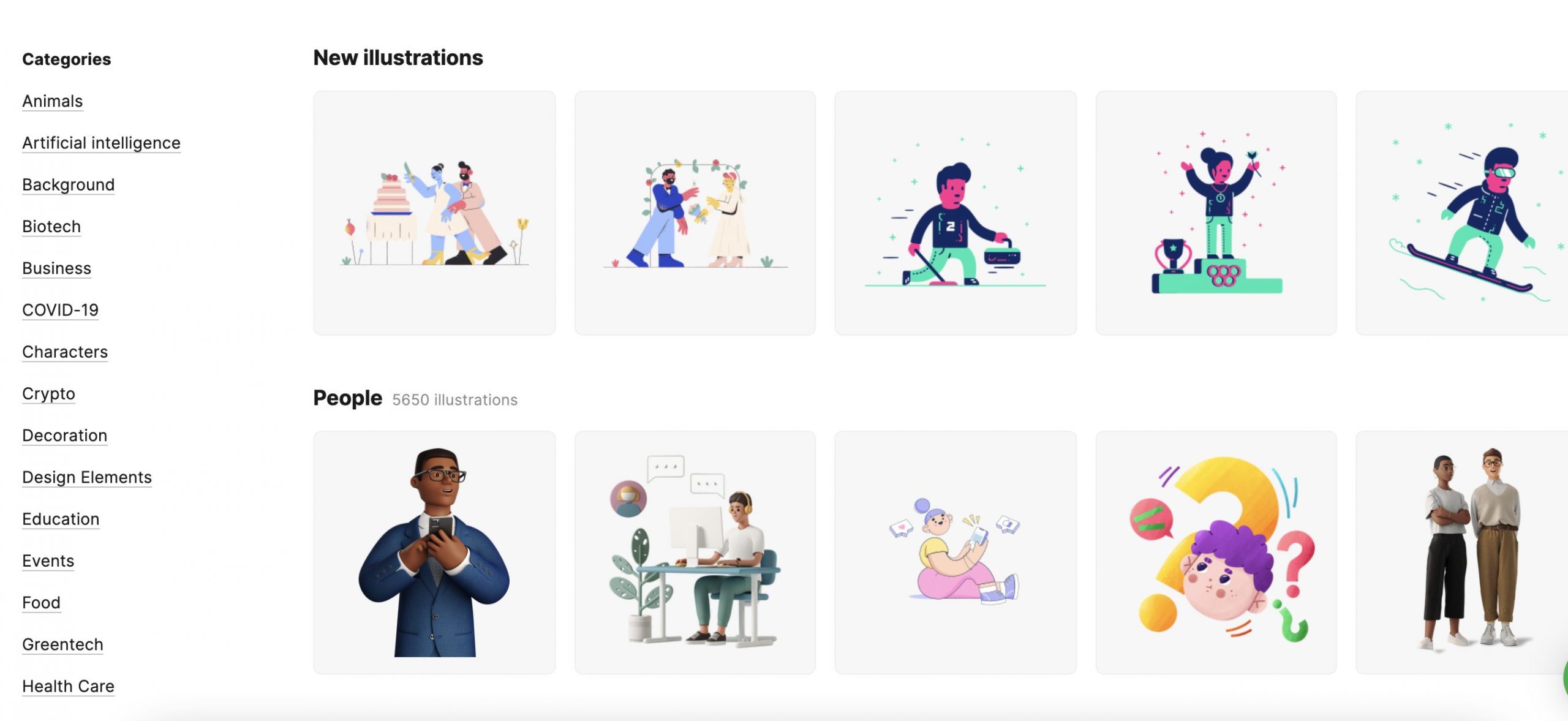
I am sure there are also many other popular illustrations site but here is the few lists that I like.
Yuuma
yuuma at 2022年02月07日 11:00:00
- 2022年02月04日
- 技術情報
Laravel の「One of Many」を使って最新と最高を取る方法
今回は、LaravelのOne of Manyを使って、最新と最高のデータを取得する方法についてご紹介します。
リレーションシップはpostとcommentの関係を作ることにします。そのため、新しいプロジェクトを作成し、このプロジェクトでマイグレーションとシーダーファイルをそれぞれ設定することにします。
以下のコメントは、マイグレーションファイルとシーダーファイルの作成を同時に使用することができます。
php artisan make:model Post -ms
php artisan make:model Comment -msマイグレーションを変更
ファイル __create_posts_table に name カラムを追加する。

ファイル __create_comment_table にcommentと post_idカラムを追加する。
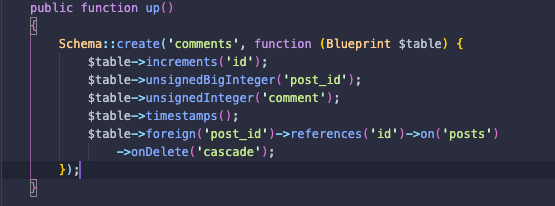
続いて、post とcomemntテーブルにテストするためSeederファイルを作ります。
postテーブルため
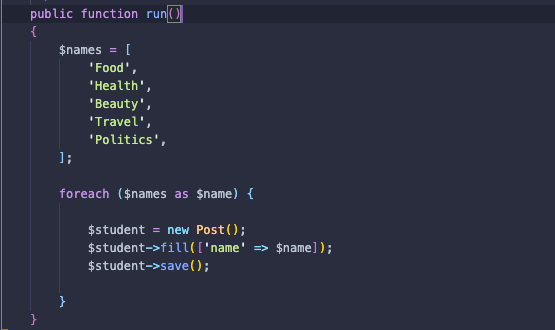
commentテーブルため
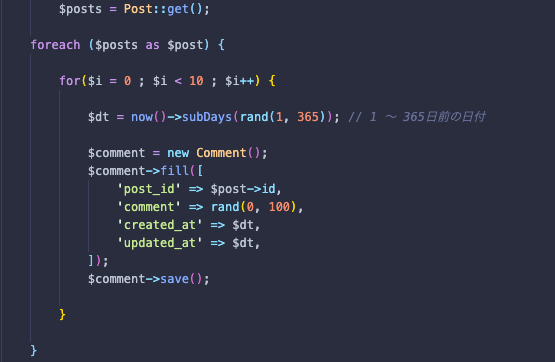
最後は、作成したファイルをDatabaseSeeder.phpにセットします。

続いて、今から「One of Many」の設定をしましょう!
今回は最初のidだけを使ってますが、他のことにも同じようにできます。
post id 1の最新コメントを取得しましょう!

呼び出し方は

このように設定すると、結果は

データベースにも、コメントID10が最後となります。
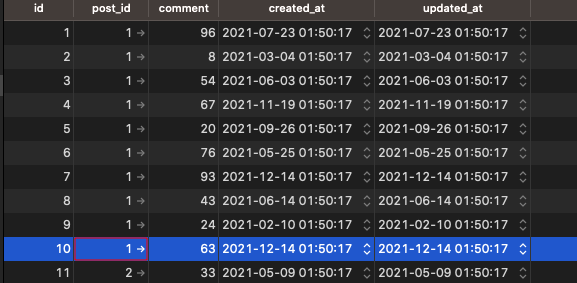
次は
post id 1の最高コメントを取得しましょう!

今回はOfManyを使います。
以下のように呼び出します。

すると、結果は

データベースにも、96が一番高いコメント点のデータなので、Ok となります。
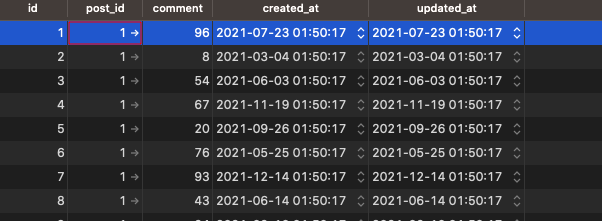
ということで今回は以上になります。
最後までご高覧頂きまして有難うございました。
By Ami
asahi at 2022年02月04日 10:00:00
- 2022年02月03日
- 技術情報
DataTablesを使用したテーブル生成とサーバーサイド連携 (1)
nishida at 2022年02月03日 10:00:00
- 2022年02月01日
- 技術情報
SQL & NoSQL
Today I would like to share about differences between SQL and NoSQL. Let’s take a look.
SQL databases are commonly referred to as relational database management systems (RDBMS). Traditional RDBMS uses SQL syntax as these systems utilize row-based database structures that connect related data objects between tables. Examples of RDBMS SQL databases include Backendless, Microsoft Access, MySQL, Microsoft SQL Server, SQLite, Oracle Database, IBM DB2, etc.
NoSQL databases, on the other hand, are databases without any structured tables fixed for holding data. Technically, all non-relational databases can be called NoSQL databases. Because a NoSQL database is not a relational database, it can be set up very quickly and with minimal pre-planning. Examples of NoSQL databases include MongoDB, DynamoDB, SimpleDB, CouchDB, CouchBase, Orient DB, Infinite Graph, Neo4j, FlockDB, Cassandra, HBase, etc.
Querying Language & Database Schema
SQL
SQL database use structured query language. They have pre-defined schema for data structure. SQL querying languages have been around for long time and have evolved greatly , even providing with great libraries one can use to ease querying. It is perfect for complex data structures and queries. But SQL has strict data structure. SQL query language is declarative and lightweight. Significant research has to be done before creating and implementing any RDB since it is very difficult to change schema and data structure once project is deployed.
NoSQL
NoSQL have dynamic schema and hence data can be created quickly without defining the structure. Every document can have its own structure and syntax, and there is flexibility to use column-oriented, document-oriented, graph-oriented or Key-value pairs! Each NoSQL can have a different query language, adding to the complexity of learning more languages in order to work with different database. NoSQL query language is non-declarative.
Data Structure
SQL
Data is stored in tables with pre-defined columns. Each entry is a new row essentially that we are creating or accessing.
NoSQL
Data can be stored as a JSON, graph, key-value pairs or tables with dynamic columns.
Database Scaling
SQL
They are Vertically scalable. Load handling capabilities of a single server can be increased by adding more RAM, CPU or SSD capacity. This is also called ‘scale-up’.
NoSQL
They are Horizontally scalable. Data traffic can be increased by sharding, simply by adding more servers. They are better from scalability perspective, and preferred for large and frequently changed data.
Conclusion
Both SQL and NoSQL databases are used in specific needs. Depending on the goals and data environment of an organization, their specific pros and cons could be amplified.
When we decide between SQL and NoSQL, we have to focus on 3 core concepts for our database that suits our project.
Structure: Every project needs to store and retrieve data differently. Structure needs to be chose that requires least amount of work and easy scalability.
Speed and Scale: Data modelling can help in deciding best route to get optimum speed. Some databases are designed for optimized read-heavy app while others write-heavy solutions. Selecting right database for project’s I/O is important.
Size: It depends on maximum amount of data we can store and process, before impacting the database. It can vary from combination of data structure stored, partitioned data across multiple filesystems and servers, and also vendor specifics.
This is all for now.
Hope you enjoy that.
By Asahi
waithaw at 2022年02月01日 10:00:00